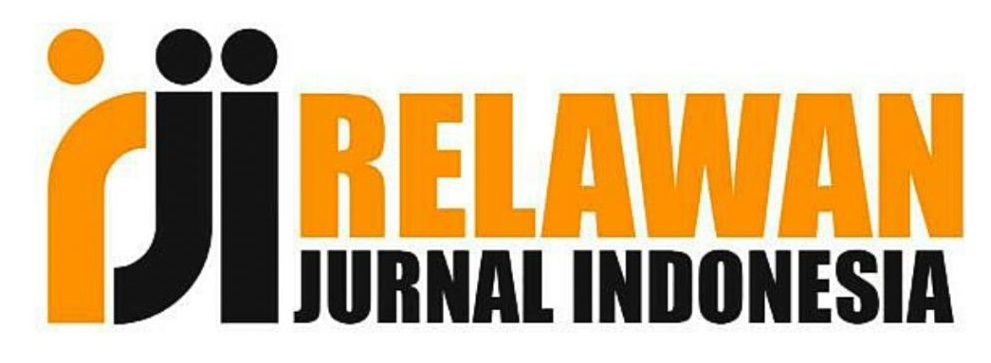Pemanfaatan Limbah Cair Industri Tahu Harapan Maju, Cimanggis, Depok sebagai Media Kultur Spirulina sp.
DOI:
https://doi.org/10.36277/abdimasuniversal.v4i2.211Keywords:
Community Service, wastewater utilization, industrial tofu wastewater, Spirulina sp. cultivation, environmental conservationAbstract
Industrial waste in Depok still a problem raised because its contents were not following the government’s quality standards. Contaminants were considered pollutant are Chemical Oxygen Demand (COD), Biochemical Oxygen Demand (BOD), and Total Suspended Solids (TSS) were quite high. One of these wastes was tofu wastewater which produced a foul odor and pollutes the environment when discharged directly into water bodies. Lack of industrial owners' education of the economic value of the waste caused direct disposal without being utilized first. Therefore, this Community Service activity aims to determine the feasibility of tofu industrial wastewater as a Spirulina sp. culture medium and provided education to the tofu factory owners, to utilize their liquid waste. In the implementation several stages are carried out, namely literature studies, sampling, implementing wastewater assessments, counseling also training. The result of this activity is tofu industrial wastewater can be utilized as a medium for cultivating Spirulina sp. which added economic value while reducing the environmental pollution. This can be seen from the results of Spirulina cultivation on the 10th day where the Optical Density (OD) continues to increase and harvested for further use.
Downloads
References
Anggraini, W., Zulfa, M., Prihantini, N. N., Batubara, F., & Indriyani, R. (2020). Utilization of Tofu Wastewater for the Growth of Red Spinach (Alternanteraamoenavoss) in Floating Raft Hydroponic Cultures. Journal of Physics: Conference Series, 1467(1). https://doi.org/10.1088/1742-6596/1467/1/012005.
Badan Pusat Statistik. (2020). Rata-Rata Konsumsi per Kapita Seminggu Beberapa Macam Bahan Makanan Penting, 2007-2019. https://www.bps.go.id/statictable/2014/09/08/950/rata-rata-konsumsi-per-kapita-seminggu-beberapa-macam-bahan-makanan-penting-2007-2017.html
Caturwati, L. N., & Setyati, R. H. (2020). Optimation of Spirulina sp. Growth in Walne Media with Variation of Urea and NaHCO3 Supplements. Journal of Tropical Biodiversity and Biotechnology, 5(1), 53–58. https://doi.org/10.22146/jtbb.53635.
Christwardana, M., & Nur, M. M. A. (2013). Spirulina platensis : POTENSINYA SEBAGAI BAHAN PANGAN FUNGSIONAL. 2(1), 1–4.
Dianursanti, Rizkytata, B. T., Gumelar, M. T., & Abdullah, T. H. (2014). Industrial tofu wastewater as a cultivation medium of microalgae Chlorella vulgaris. Energy Procedia, 47, 56–61. https://doi.org/10.1016/j.egypro.2014.01.196.
Faisal, M., Gani, A., Mulana, F., & Daimon, H. (2016). Treatment and utilization of industrial tofu waste in Indonesia. Asian Journal of Chemistry, 28(3), 501–507. https://doi.org/10.14233/ajchem.2016.19372.
Fakhri, M., Antika, P. W., Ekawati, A. W., & Arifin, N. B. (2020). Growth, Pigment and Protein Production of Spirulina platensis under different Ca(NO3)2 concentrations. Journal of Aquaculture and Fish Health, 9(1), 38. https://doi.org/10.20473/jafh.v9i1.15769.
Hadiyanto, H. (2018). Ozone Application for Tofu Waste Water Treatment and Its Utilisation for Growth Medium of Microalgae Spirulina sp. E3S Web of Conferences, 31. https://doi.org/10.1051/e3sconf/20183103002.
Hadiyanto, H., & Nais, P. A. (2019). Biorefinery Mikroalga (1st ed.). EF Press Digimedia.
Maulani, M. (2021). Pemanfaatan pengolahan limbah industri tahu menggunakan bentonite. Community Empowerment, 6(10), 1892–1898.
Mulana, F., Alam, P. N., & Daimon, H. (2014). Wastewater characteristics from tofu processing facilities in Banda Aceh. The Proceedings of The 4th Annual International Conference Syiah Kuala University (AIC Unsyiah), 22–25.
Simanjuntak, N. A. M. B., Zahra, N. L., & Suryawan, I. W. K. (2021). Tofu Wastewater Treatment Planning with Anaerobic Baffled Reactor (ABR) and Activated Sludge Application. Jurnal Ilmu Alam Dan Lingkungan, 12(1), 21–27.
Soni, R. A., Sudhakar, K., & Rana, R. S. (2019). Comparative study on the growth performance of Spirulina platensis on modifying culture media. Energy Reports, 5, 327–336. https://doi.org/10.1016/j.egyr.2019.02.009
Suryana, A. (2014). Menuju Ketahanan Pangan Indonesia Berkelanjutan 2025: Tantangan dan Penanganannya. Forum Penelitian Agro Ekonomi, 32(2), 123. https://doi.org/10.21082/fae.v32n2.2014.123-135.
Syaichurrozi, I., & Jayanudin, J. (2017). Effect of Tofu Wastewater Addition on the Growth and Carbohydrate-Protein-Lipid Content of Spirulina platensis. International Journal of Engineering, Transactions B: Applications, 30(11). https://doi.org/10.5829/ije.2017.30.11b.02.
Syaichurrozi, Iqbal, & Jayanudin. (2016). Potensi Limbah Cair Tahu Sebagai Media Tumbuh Spirulina platensis. Jurnal Integrasi Proses, 6(2), 64–68. file:///C:/Users/acer/Downloads/809-1691-1-SM.pdf.





















